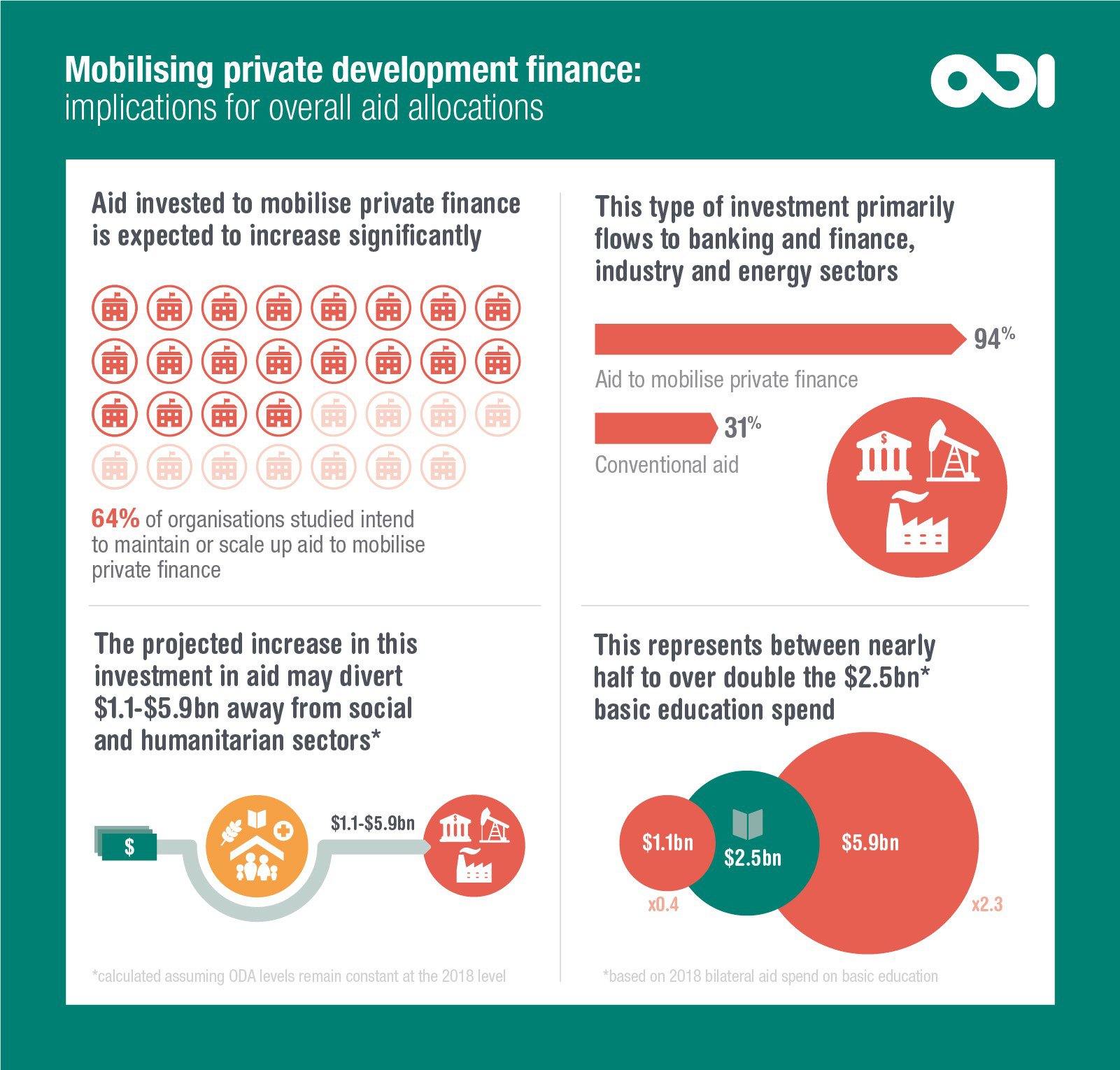An increasing amount of overseas development assistance (ODA) is being used to mobilise private finance and investment. This investment accounted for a reported $2.46 billion of bilateral ODA spending in 2018, about 2% of total bilateral ODA. The true share of ODA invested in this way is likely to be significantly higher, as this type of investment is quickly increasing: of the 31 bilateral and multilateral aid organisations studied in this report, 20 intend to either maintain or scale up this type of investment.
This report, produced by Expertgruppen för biståndsanalys (EBA), finds that while 69% of 'conventional' aid flows to social and humanitarian sectors, only 6% of aid is used to mobilise private finance flow to these same sectors; the majority of aid invested in this way flows to 'productive' sectors, such as banking, energy and industry. Furthermore, while 40% of 'conventional' aid seeks to contribute to gender equality, only 2% of aid invested to mobilise private finance seeks to contribute to this goal.
This report analyses the implications of this substantive increase of aid to mobilise private finance on overall aid flows through a combination of literature review, in-depth quantitative analysis and qualitative enquiries, using a sample of ODA providers. Specifically, it addresses the following questions:
- When providers invest aid to mobilise private finance, how does this affect overall ODA allocation patterns?
- How have ODA providers factored these linkages into their spending decisions?
- How far do current reporting processes facilitate or frustrate effective decision-making and scrutiny?

